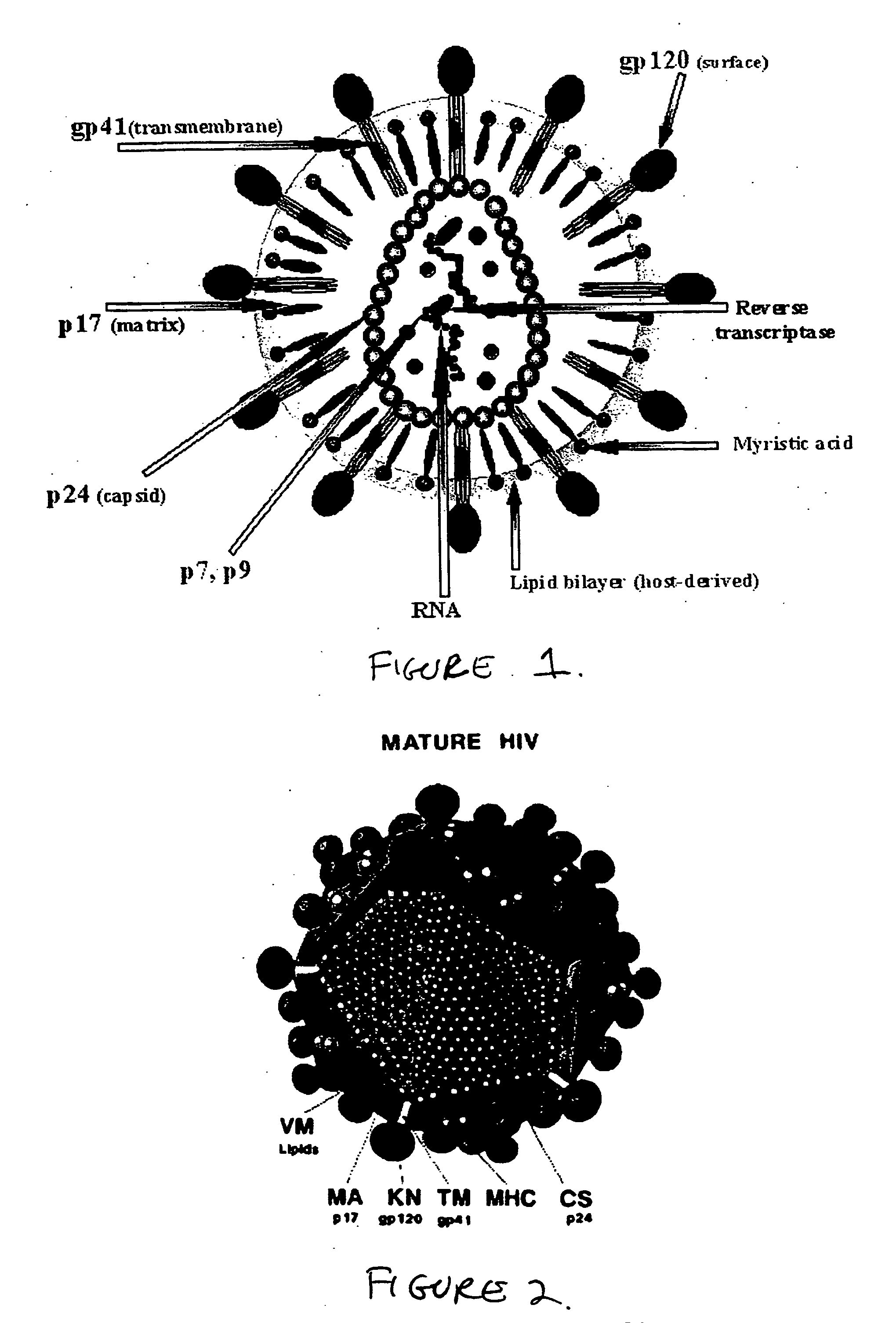Heat shock protein-based antiviral vaccines
- Summary
- Abstract
- Description
- Claims
- Application Information
AI Technical Summary
Benefits of technology
Problems solved by technology
Method used
Image
Examples
Embodiment Construction
[0019] The present invention relates to vaccines and to methods for inducing, in a subject, immunity to a virus, whereby non-pathogenic multi-component viral particles are covalently conjugated to one or more species of "javelin" molecules which non-covalently bind the multi-component viral particles to heat shock proteins. Accordingly, this section describes various viral components and javelins, how they may be linked, and how the ability of such complexes to associate with heat shock protein and facilitate an immune response may be tested. For purposes of clarity of presentation, and not by way of limitation, this section of the specification is divided into the following subsections:
[0020] 1) viral components;
[0021] 2) "javelin" tethers;
[0022] 3) methods of linking viral components to javelins;
[0023] 4) assays to determine lack of pathogenicity;
[0024] 5) assays to determine immunogenicity;
[0025] 6) compositions of the invention; and
[0026] 7) methods of inducing immunity.
5.1 VIRA...
PUM
| Property | Measurement | Unit |
|---|---|---|
| Immunogenicity | aaaaa | aaaaa |
| Heat | aaaaa | aaaaa |
Abstract
Description
Claims
Application Information
 Login to View More
Login to View More - R&D
- Intellectual Property
- Life Sciences
- Materials
- Tech Scout
- Unparalleled Data Quality
- Higher Quality Content
- 60% Fewer Hallucinations
Browse by: Latest US Patents, China's latest patents, Technical Efficacy Thesaurus, Application Domain, Technology Topic, Popular Technical Reports.
© 2025 PatSnap. All rights reserved.Legal|Privacy policy|Modern Slavery Act Transparency Statement|Sitemap|About US| Contact US: help@patsnap.com

